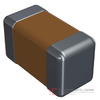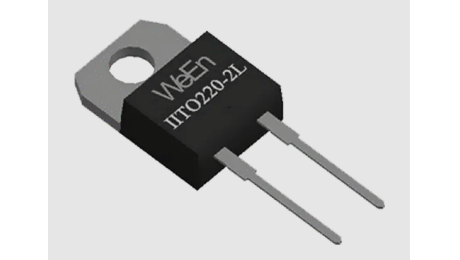-
Signs Your 12V Battery Is Fully Charged
September 26th, 2024
Understanding a 12V battery goes beyond voltage, involving the nuances of different technologies like lead-acid and LiFePO4, their cell structures, vo... -
Understanding RF Connectors
September 26th, 2024
The RF connector serves as a bridge for electrical connections, linking coaxial cables, microstrip lines, or other RF transmission lines, enabling bot... -
Exploring Voltage and Capacity in Batteries
September 26th, 2024
Understanding the interplay between voltage and capacity to optimizing battery efficiency, as voltage drives electron flow and capacity dictates how l... -
Determining Receptacle Count for a 20 Amp Circuit
September 25th, 2024
A 20-amp circuit can handle up to 1,920 watts, 80% of its 2,400-watt capacity, require safety margin that prevents hazards like overheating and trippe... -
Understanding The Basics of Bi-Directional Trigger Diodes
September 25th, 2024
This article provides a comprehensive overview of bi-directional trigger diodes, examining their definition, structure, function, applications, and al... -
Low Voltage Wire Gauge Explained
September 25th, 2024
Low voltage wires play a big role in many electrical applications, from lighting to data transmission, but choosing the right one can be challenging. ... -
Comparing Solar Batteries and Ordinary Batteries
September 25th, 2024
This article explores the fundamental concepts, characteristics, and working principles of solar batteries, highlighting the differences between sola... -
Understanding the ULN2003AN
September 25th, 2024
If you want to learn how this important electronic component can enhance your circuit design knowledge, you're in the right place. The ULN2003AN is a ... -
Can Emergency Lights Drain Batteries?
September 25th, 2024
To ensure your emergency lights are reliable when you need them most, it’s require to follow simple battery maintenance tips that enhance longevity a... -
Learn Irlz44n Power MosFET
September 25th, 2024
The Irlz44n is a renowned power mosfet.Aosfet, or metal oxideSemiconductor Field Effect Transistor, Is a Device Used for Switching orAmplifying Electr... -
What Do You Know About Button Batteries?
September 25th, 2024
Button batteries, or coin cells, are small yet powerful energy sources, typically 5 to 25 millimeters in diameter. Made primarily of lithium, they off... -
A Detailed Comparison of 21700 and 18650 Batteries
September 25th, 2024
In this article, let's go into the differences between 18650 cells and 21700 cells, and why 18650 batteries have become widely used across various app...
- English
-
EnglishDeutschItaliaFrançais한국의русскийSvenskaNederlandespañolPortuguêspolskiSuomiGaeilgeSlovenskáSlovenijaČeštinaMelayuMagyarországHrvatskaDanskromânescIndonesiaΕλλάδαБългарски езикGalegolietuviųMaoriRepublika e ShqipërisëالعربيةአማርኛAzərbaycanEesti VabariikEuskeraБеларусьLëtzebuergeschAyitiAfrikaansBosnaíslenskaCambodiaမြန်မာМонголулсМакедонскиmalaɡasʲພາສາລາວKurdîსაქართველოIsiXhosaفارسیisiZuluPilipinoසිංහලTürk diliTiếng ViệtहिंदीТоҷикӣاردوภาษาไทยO'zbekKongeriketবাংলা ভাষারChicheŵaSamoa日本語SesothoCрпскиKiswahiliУкраїнаनेपालीעִבְרִיתپښتوКыргыз тилиҚазақшаCatalàCorsaLatviešuHausaગુજરાતીಕನ್ನಡkannaḍaमराठी
E-mail:Info@YIC-Electronics.com
Home > Blog
Blogs
Popular Blogs
Latest Related Products

0402YA470JAT4A
KYOCERA AVXCAP CER 47PF 16V C0G/NP0 0402
ADC102S101CIMM
Texas InstrumentsIC ADC 10BIT SAR 8VSSOP
APW1175KC
ANPECANPEC SSOP-20
12061C334MAT2A
KYOCERA AVXCAP CER 0.33UF 100V X7R 1206
TPSE477K006R0050
KYOCERA AVXCAP TANT 470UF 10% 6.3V 2917
LT1809CS8
N/ALT1809CS8 LT
TPSB686K006R0250
KYOCERA AVXCAP TANT 68UF 10% 6.3V 1411
0603YA101FAT2A
KYOCERA AVXCAP CER 100PF 16V NP0 0603
GQM1555C2D6R3CB01D
Murata ElectronicsCAP CER 6.3PF 200V NP0 0402
HX6220-F09DLAG
HiamxHiamx TQFP128
SN74AUC2G06YEPR
Texas InstrumentsIC INVERTER OD 2CH 2-INP 6DSBGA
EDE1108AFBG-8E-F
ELPIDAEDE1108AFBG-8E-F ELPIDA
R5F212A8SDFP#V2
Renesas Electronics America IncIC MCU 16BIT 64KB FLASH 64LFQFP
SY-5W-K
TAKAMISTAKAMIS DIP
PIC32MX250F128D-I/PT
Microchip TechnologyIC MCU 32BIT 128KB FLASH 44TQFP
TPS2383PM
Texas InstrumentsIC POE CNTRL 8 CHANNEL 64LQFP
GQM1885C2A1R5BB01D
Murata ElectronicsCAP CER 1.5PF 100V C0G/NP0 0603
RT2465B7TR7
CTS Resistor ProductsRES NTWRK 18 RES 47 OHM 36LBGA
12-21/BHC-AN1P2/2C
EVERLIG12-21/BHC-AN1P2/2C EVERLIG
RT9241BCS
RICHTEKRT9241BCS RICHTEK
LMH6551MM
Texas InstrumentsIC OPAMP VFB 1 CIRCUIT 8VSSOP
GRM1556P1H1R4CZ01D
Murata ElectronicsCAP CER 1.4PF 50V P2H 0402
QMK325BJ473MN-T
Taiyo YudenCAP CER 0.047UF 250V X5R 1210
TPIC1331DBTR
TITPIC1331DBTR TI
M36W0T5040T1ZAQE
STMicroelectronics32MB NOR FLASH & 16MB PSRAM
06033A120KAT2A
AVX CorporationCAP CER 12PF 25V C0G/NP0 0603
ISD1760PY
Nuvoton Technology CorporationIC VOICE REC/PLAY 120SEC 28DIP
LTC3555IUFD-1#TRPBF
Linear TechnologyIC USB POWER MANAGER 28-QFN
CC0805GRNPO9BN150
YAGEOCAP CER 15PF 50V C0G/NPO 0805
GRM21B6P1H391JZ01L
Murata ElectronicsCAP CER 390PF 50V P2H 0805
CL05B103KO5NCNC
Samsung Electro-MechanicsCAP CER 10000PF 16V X7R 0402
OTI006808
OTIOTI TSOP
TPS6951102A2
TITI BGA
ADS1247IPWR
Texas InstrumentsIC ADC 24BIT SIGMA-DELTA 20TSSOP
RT9227ACS
RICHTEKRT9227ACS RICHTEK
LG1152AN-B2
LGDISPLLALG1152AN-B2 LGDISPLLA
S29GL01GS11FHB02
BGAS29GL01GS11FHB02 BGA
VJ0402Y681KXJPW1BC
Vishay VitramonCAP CER 680PF 16V X7R 0402
MAX976ESA+T
Analog Devices Inc./Maxim IntegratedIC COMPARATOR 2 GEN PUR 8SOIC
T491D336K010AT7280
KEMETCAP TANT 33UF 10% 10V 2917
VE-J70-IZ
Vicor CorporationDC DC CONVERTER 5V 25W
TPSD227K010T0150V
KYOCERA AVXCAP TANT 220UF 10% 10V 2917
MAX4194ESA+T
Analog Devices Inc./Maxim IntegratedIC INST AMP 1 CIRCUIT 8SOIC
IDT89TTM552BL
IDTIDT89TTM552BL IDT
MAX3318CAP
N/AMAX3318CAP MAXIM
STI3520CV-ES
STSTI3520CV-ES ST
AD5241BR-10
N/A
DS2745U+T&R
N/A
ML7357B-01LAZG3A
SONYSONY BGA
TPS259474ARPW
TITI 2021+RoHS















